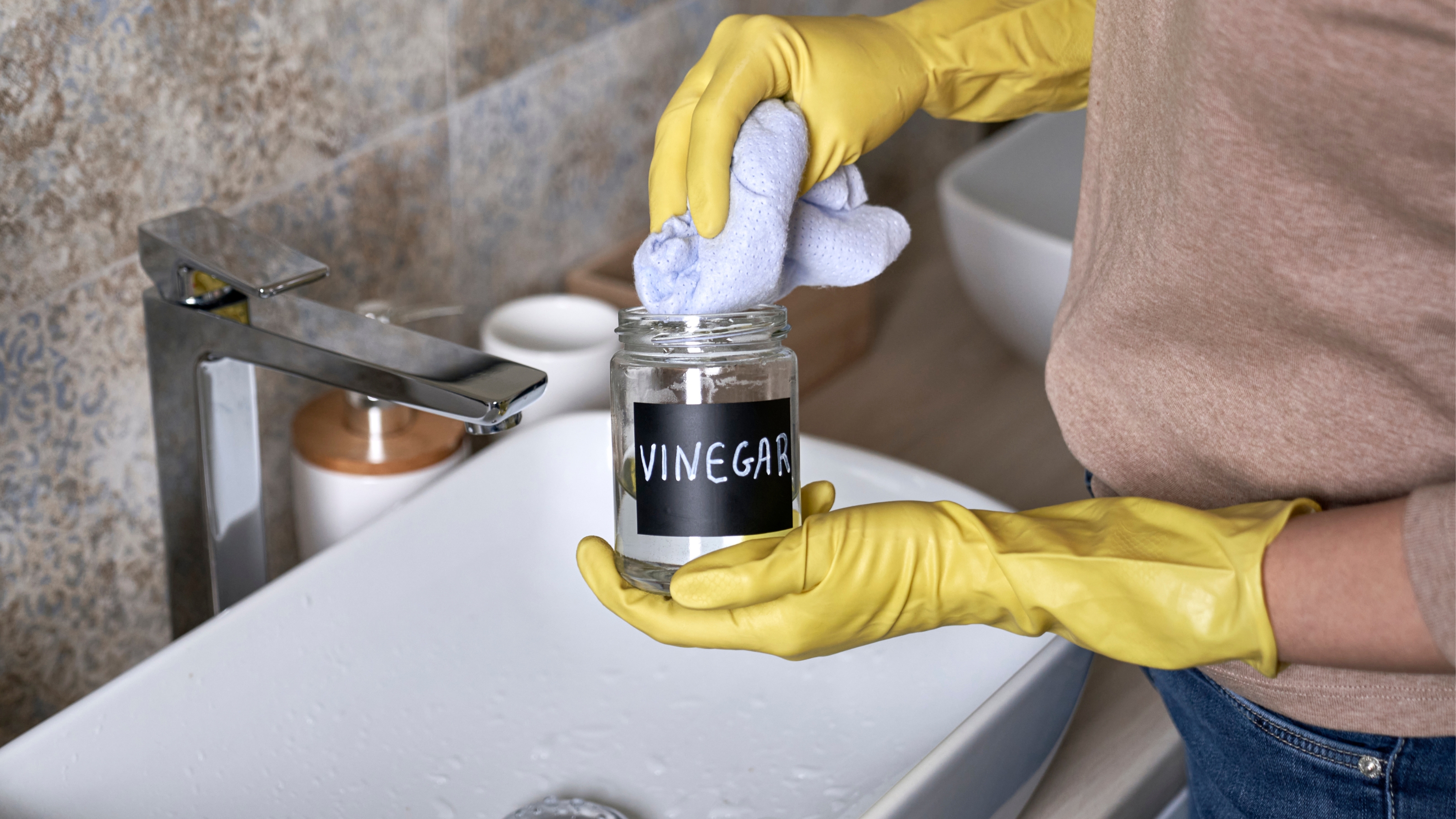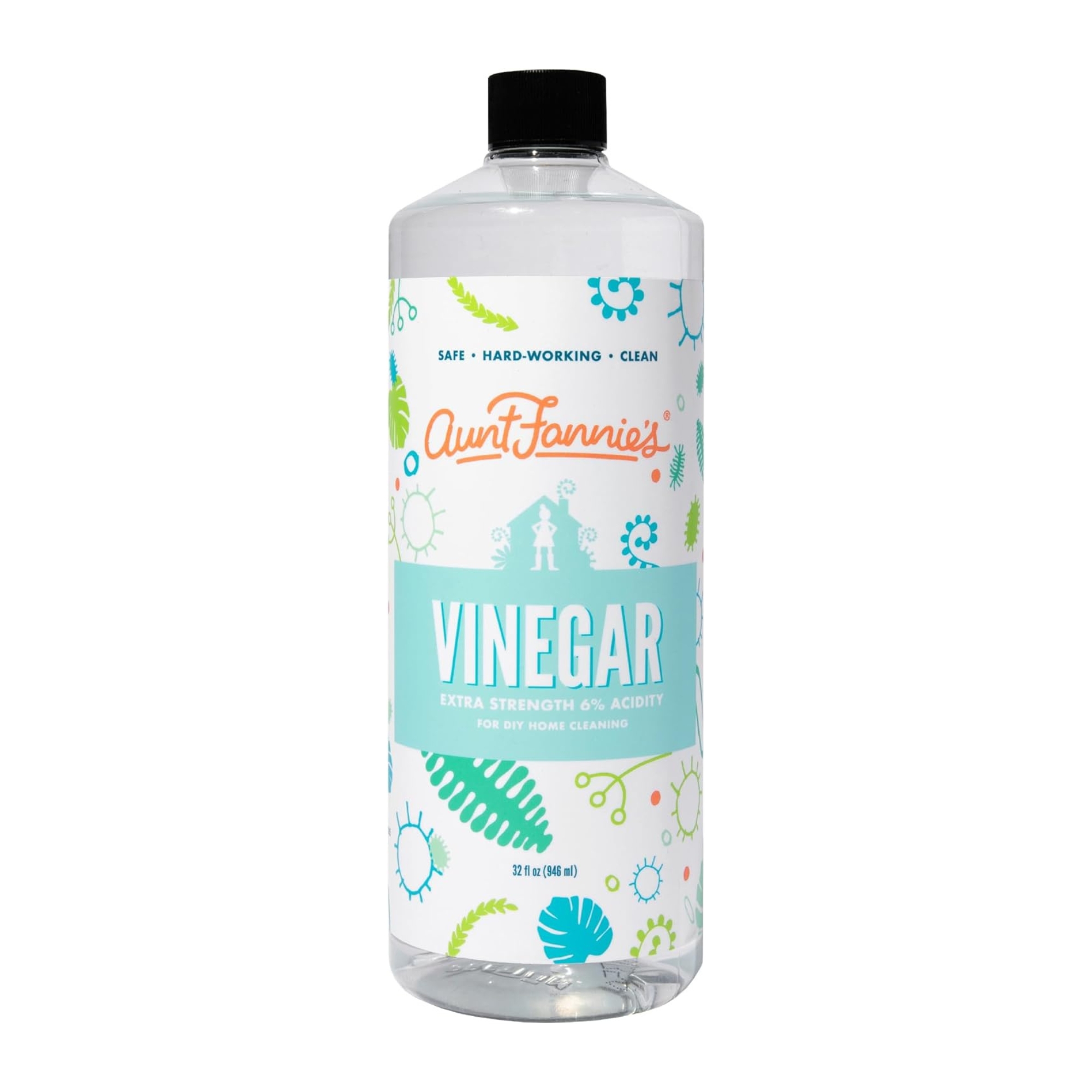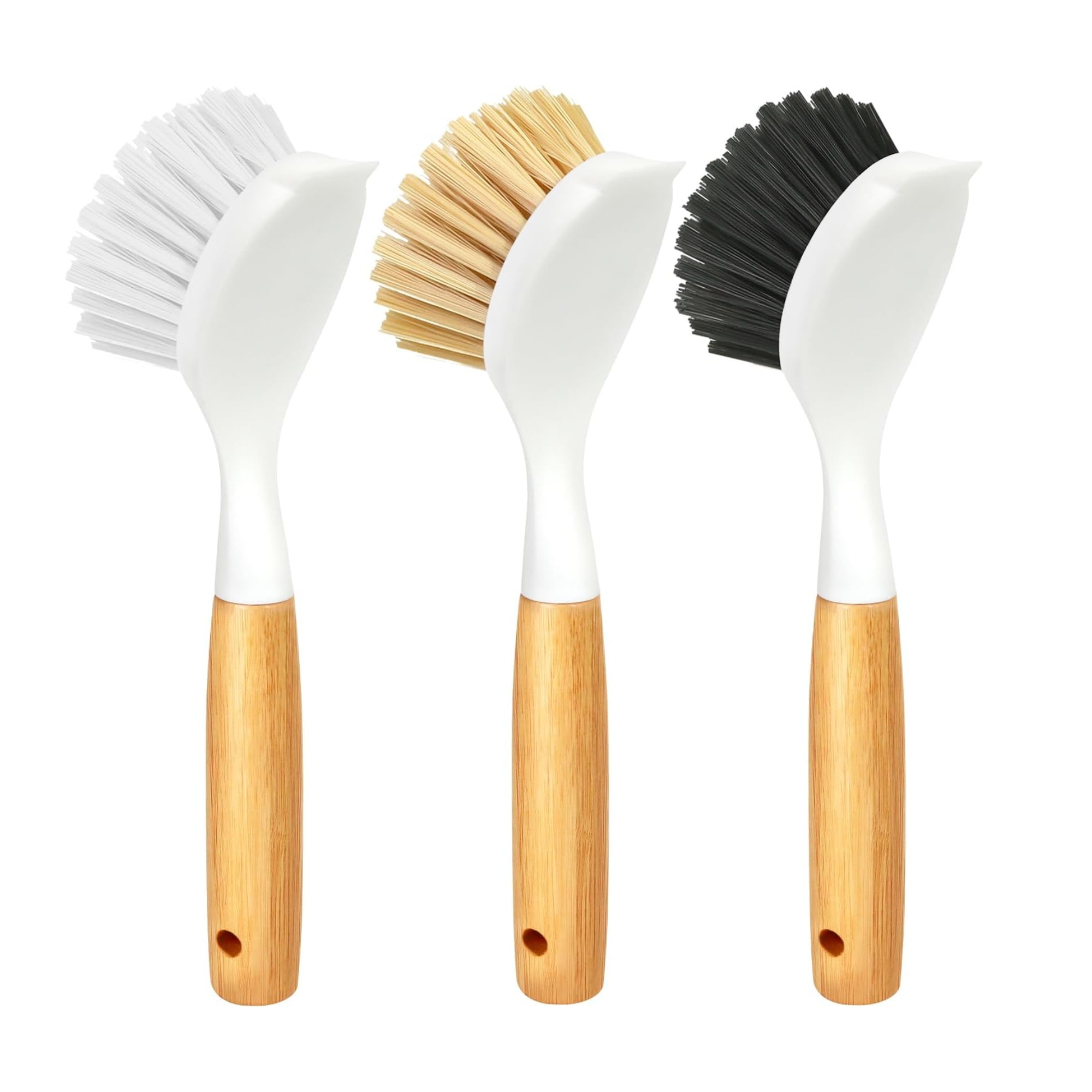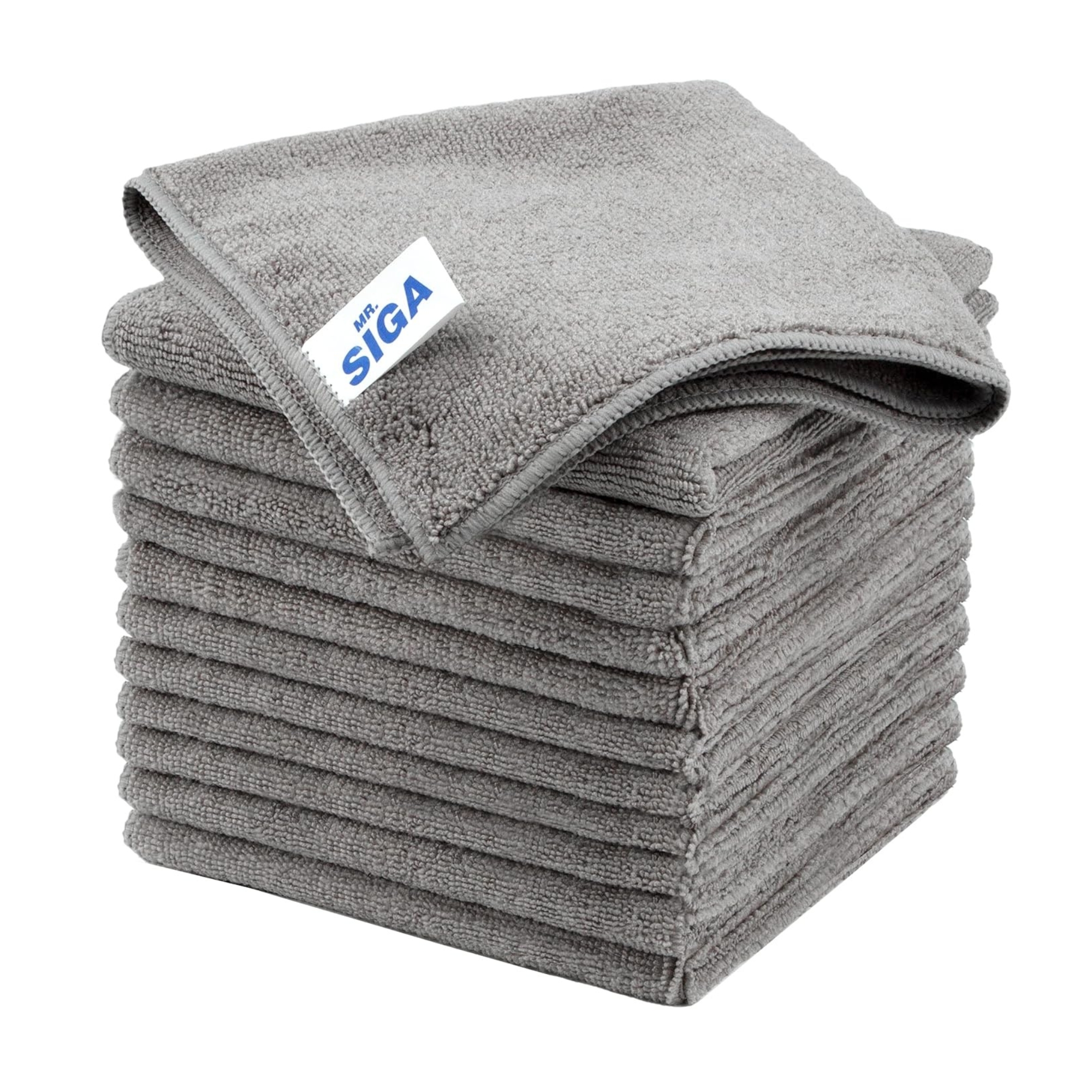Cleaning with vinegar — 10 household jobs you can do with this cheap ingredient
Our expert guide to cleaning with vinegar around the home in creative and useful ways


Cleaning with vinegar is the key to a fresh and vibrant home you feel proud of, and there are lots of uses for it.
When it comes to sprucing up the house, few ingredients boast the versatility of vinegar. Our cleaning experts reveal 10 household cleaning jobs you can do with vinegar, how to do them, top tips on homemade solutions and which vinegar is best for cleaning.
When on a tight budget, you don’t always need oodles of expensive products to clean a house, so let our experts’ years of experience guide your use of this inexpensive, handy liquid.
Pro cleaning with vinegar ideas for the home
When it comes to the best cleaning supplies for your home, it's hard to beat vinegar for its blend of versatility and efficiency, and chances are, you already have some in your kitchen.
Learning how to clean with vinegar, whether using distilled white vinegar for its potency, cleaning vinegar for extra acidity, or apple cider vinegar for fragrance, means you'll spruce every room in the house with ease — and little cost.
Where our pros have suggested products, we've sourced matching picks from trusted retailers.
Prices were correct at the time of publication.
Get small space home decor ideas, celeb inspiration, DIY tips and more, straight to your inbox!
1. Brighten your windows

Windows brighten up your home and allow views of nature's splendor, but they're also magnets to dust, grime, and finger (or paw) prints.
Cleaning windows with vinegar — white or distilled vinegar, such as Walmart's Heinz All Natural Distilled White Vinegar — is the best for restoring sparkle.
Wells Ye, founder of Fresh Tech Maid, says, "First, use a dry fabric to clean the glass of any residue. Mix equal parts white vinegar and water, then generously spritz the glass.
"Use a clean, microfiber cloth to wipe, or for bigger windows, a squeegee will provide great results in less time."
Wells recommends the lint-free E-Cloth Window Cleaner Kit from Amazon for a streak-free finish. The OXO Wiper Blade Squeegee from Target is effective for windows, mirrors, showers and glass tables too.
2. Clean your kettle

Over time, mineral deposits can accumulate in your kettle, corroding the kettle and shortening its lifespan — not to mention compromising the taste of your hot drinks.
Fear not! Cleaning with vinegar will rescue your kettle from the clutches of limescale buildup.
Wells says, "Fill around half of the kettle with a solution of one part vinegar, one part water. Bring it to boil, then let the solution sit for an hour. While soaking, use a brush to agitate the kettle surface, being careful not to burn your hands."
Wells recommends the OXO Good Grips Deep Clean Brush Set from Amazon.
He adds, "Empty the kettle, then refill it with fresh water, boiling this and pouring away. This ensures no lasting taste of vinegar in your tea or coffee."
3. Drive away pests

Vinegar is a great natural way to deterring and removing unwelcome guests (the pest kind, not the human kind). You can use it to get rid of ants in a kitchen, for example.
A one-to-one mix of water and vinegar sprayed (we recommend Wayfair's Prep & Savour Spray Bottle Set) generously along the ants' common routes in, and colony trails can disrupt their pheromone trails and stop them finding their way back in, though you'll need to repeat the process for several days to create lasting impact.
4. Unclog drains

When it comes to cleaning a sink, vinegar forms half of a decidedly brilliant drain-unclogging duo.
Wells says, "Pour half a cup of baking soda down the drain, followed by a generous glug of white vinegar. This dynamic duo dissolves blockages and devours odors.
"Give the mixture a few minutes to bubble and pass through the drain, before washing any remaining particles from the channel with boiling water."
Cleaning vinegar's 6% acidity works well for this task. Try Amazon's Harris Cleaning Vinegar, which also leaves a pleasant orange scent.
For baking soda, we recommend a pack of two boxes from Walmart.
Though an effective cleaning duo, never mix vinegar and baking soda in a closed container as this will lead to a dangerous chemical reaction.
5. Remove odors
From the front hallway through to the guest bathroom, there's nothing worse that foul smells. Yes, you guessed it — vinegar is your ultimate odor eliminator!
Karina Toner, operations manager at Spekless Cleaning, says, "To absorb unwanted room odors, simply place a small bowl of vinegar in the room. For stronger odors, simmer a pot of water with a few tablespoons of vinegar and some citrus peels."
From musty curtains to worn upholstery, vinegar is also highly effective at removing odors from fabrics.
Karina adds: "Simply spritz an equal-parts mixture of vinegar and water onto the fabric and let it air dry. The acetic acid in vinegar neutralizes odor-causing bacteria, leaving fabrics smelling fresh and clean. As the vinegar evaporates, it takes away foul odors with it, leaving behind nothing but a clean scent."

Karina is an Operations Manager at Spekless Cleaning, a prominent cleaning company based in Arlington, VA. With over a decade of hands-on experience in the cleaning industry, she's honed her expertise in providing top-notch cleaning solutions tailored to meet the unique needs of clients effectively, and sustainably.
6. Spruce floors

For your kitchen and bathroom to really pop, you'll want to know how to clean floors with vinegar.
Whether it's hardwood, tile, or laminate, a solution of vinegar and water is suitable for most floor types, effectively cutting through dirt and leaving a sparkling finish.
Karina says, "For tile or linoleum floors, add a cup of vinegar to a gallon of hot water and mop well. Hardwood floors require extra care, so go with a quarter cup vinegar per gallon of water.
"Dampen a microfiber mop with the solution and mop the floor, working in the direction of the wood grain. Be careful to avoid soaking the floor as oversaturation can cause warping or discoloration."
Our experts recommend the Rubbermaid Microfiber Reveal Mop Cleaning Kit from Amazon.
Karina adds: "Test the solution in an inconspicuous area first to ensure it doesn't damage the floor finish. This might seem like a small detail, but it's a crucial step in preserving the integrity of your flooring."
7. Clean kitchen appliances

From microwaves to refrigerators, kitchen appliances are workhorses of the home, but their regularity of use means grease and grime can accumulate quickly.
However, vinegar's quality as a natural degreaser makes it perfectly placed for the job. Cleaning with apple cider vinegar works well here for its combination of potency and pleasant smell.
Karina says, "For your refrigerator, mix equal parts water and vinegar to clean shelves and drawers. The acidity of vinegar helps to break down grime and food residue. Not only does it cut through tough stains and spills, but it also eliminates any lingering odors, ensuring that your fridge remains fresh at all times."
For cleaning microwaves with vinegar, simply heat a bowl of vinegar for a few minutes, before wiping down the interior.
Karina says, "The steam generated by the heated vinegar helps loosen caked-on food residue, allowing you to wipe it away effortlessly with a damp cloth."
As well as playing a key role in how to clean an oven, running a mixture of equal parts water and vinegar through a coffee maker removes mineral deposits.
Karina adds, "The acidity of vinegar helps to dissolve calcium and mineral buildup, restoring your coffee maker's performance and prolonging its lifespan."
8. Whiten whites
Vinegar's acidic properties lend itself to whitening fabrics, making it a great, eco-friendly alternative to bleach.
Simply add a half cup vinegar, along with the detergent, to the laundry cycle for extra-gleaming whites. As an added bonus, vinegar also acts a deodorising softener, so your clothes will emerge soft and fresh.
9. Clean showerheads

A clogged showerhead can put a damper on your morning routine, reducing water pressure and leaving you less than refreshed. Vinegar offers a simple solution to this common problem.
By soaking the showerhead in a mixture of vinegar and water, you can dissolve mineral deposits and restore optimal water flow, ensuring a rejuvenating shower experience every time.
Karina says: "Simply fill a plastic bag with vinegar and secure it over the showerhead. Leave it overnight to remove mineral deposits, before scrubbing with an old toothbrush. The combination of vinegar's acidity and the scrubbing action helps dislodge mineral deposits and bacteria, restoring your showerhead's flow."
10. Remove rust
Rust can mar the appearance of metal surfaces, leaving them looking worn and neglected. Vinegar's acidic nature makes it an excellent rust remover, capable of dissolving rust and restoring metal to its former glory.
Salt and vinegar work a dream here. Not only is it America's most popular crisp flavor, but this pair combine brilliantly to get rid of rust.
The salt increases the natural acidity of the vinegar to the point where it can dissolve the oxidized metal. The salt also acts as an abrasive when it comes time to start scrubbing.
In a tub or basin, mix one cup salt with two cups white vinegar, then dilute with water.
If the item is removable, like a grill, pop it into the solution and allow it to soak overnight before scrubbing the loosened rust away. If not, drench a brush or microfiber cloth in the solution before getting to work.

Price: $12.99
This extra-strength vinegar is great for any household jab. Stock up on this hard-working ingredient for cleaning floors, bathrooms, and more.

Price: $7.95
A pack of these handy dish brushes will help you scrub just about anything. From getting rid of water stains in the bathroom to getting stains out of carpet.

Price: $14.99
Ensure you don't leave any streaks when cleaning glass or metallic surfaces with these microfiber cloths. This pack of 12 can be used for just about anything.
Cleaning with vinegar, whether in the kitchen, bathroom, living room, garden will transform your routine — vinegar can work its natural magic anywhere.
Next, check out two more important household jobs where vinegar plays its part — how to clean mold from carpets and how to clean bathroom floors.

I'm a senior writer with an English degree and NCJ qualification, plus years of experience writing news, lifestyle and consumer articles for the national and international press. I'm also a copywriter, working on a breadth of consumer and corporate projects, and a private education consultant. I live in the quiet of the countryside and love completing DIY tasks to breathe life into my small, newly-built home.
